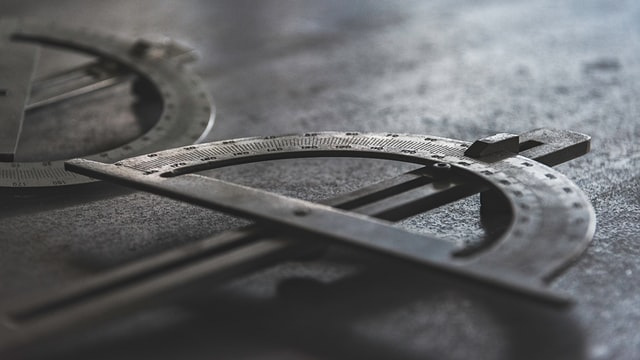Error of Measurement
Measuring devices make approximate measurement(s). If an object is measured twice at different times, the two obtained measurements may not be accurate. This difference between the measurements is called error of measurement. This error, however, is not considered a mistake or the incorrect measurement. In fact, the error in measurement is a numerical method for showing that measurements are not certain. In simple words, error of measurement is the variation between the measurement result and the correct value of the object that is being measured. According to recent studies, “the measurement error affects the repeatability of MMN” (Paukkunen, Leminen & Sepponen, 2011, p. 2195) (mismatch negativity).
Test-retest Reliability
Test-retest reliability is the estimate between scores from the similar respondents tested at dissimilar times (MacQuarrie, Applegate & Lacefield, 2008). It demonstrates the reliability and evenness of an instrument’s score in due course. It means that an instrument is reliable if the results obtained are close. It is the most simplest and renowned survey reliability indicator/marker of an instrument.
Split-Half Reliability
This term refers to an investigational mean that is used for the evaluation of a measurement instrument’s reliability. The items are assigned to two “split halves” at random and the scores inter-correlation obtained from both halves is then calculated. The consistency of results means that the two halves have the same measurement. Split-half reliability can thus be described as a means of calculating the approximate reliability of an instrument (Kaplan & Saccuzzo, 2005, p. 109).
Internal Consistency
An instrument is referred to have internal consistency when its items calculate/determine the identical attributes of an object. Internal consistency of an instrument gives the instrument the kind of reliability that does not call for repetitive scoring. Thus, an instrument is considered as valid when its scores strongly match up with the criterion scores (Brazeau, Teatero, Rawana & Blanchette, 2012).
Validity Coefficient
After the establishment of a criterion, the estimation of an instrument’s validity is easy. The estimation of a validity coefficient is done with the use of a mathematic formula that compares the instrument scores with the criterion variable scores. Thus, validity coefficients are the indicators of the extent of relationship that is present between the individuals’ scores measured by two dissimilar instruments (Kaplan & Saccuzzo, 2005).
Construct Validity
Construct validity refers to the extent to which a measure shows a relationship with other measures as supposed to be parallel with in a theoretical manner. It is used for testing the speculative structure within which it is expected that the instrument will achieve the results. It is a challenge to validate an instrument when construct validity is involved. It is important to note here that factor analysis was responsible for establishing the construct validity (Chen & Lo, 2007).
Criterion Validity
An instrument is said to possess criterion validity on the condition that it presents identical results when compared with the results of another instrument that is specifically used to determine the same variable. Such validity involves measurement of objects at multiple times. Evaluation is done by making a comparison between the authentic measurements with a decisive factor known to be the criterion variable (Kaplan & Saccuzzo, 2005, p. 137).
Content Validity
This kind of validity is related with the comprehensiveness (breadth, depth, width, range) of an instrument. It also refers to the adequacy of an instrument and how well it mirrors a complete aim (Kaplan & Saccuzzo, 2005, p. 136). When an instrument is not reliable, it means that it contains extra errors and cannot be regarded as a valid marker of the variable that is targeted.
Face validity
This type of validity is concerned with the external appearance of an instrument i.e. if it looks proper enough and may be used to measure the accurate construct. In other words, face validity refers to the degree a measuring instrument looks valid enough on the surface as useful. It involves making a judgment concerning the suitability and correctness of any measuring instrument in a specified estimation/evaluation situation through inspecting that instrument exteriorly. However, this type of validity possesses no formal recognition (Kaplan & Saccuzzo, 2005, p. 135). For that reason, it is important for researcher/scientists to not make use of a measurement instrument on the basis of its face validity particularly when other means are available for the establishment of instrument validity.
Can an instrument be reliable but not valid? Can an instrument be valid but not reliable?
Validity can be defined as “the degree to which an instrument measures what it is supposed to measure” (Polit & Beck, 2008, p. 457). On the other hand, reliability can be defined as the capability of an instrument to determine/evaluate/measure the same results in a repetitive manner and to be internally consistent. In general, a measurement is considered to be reliable when there is a very small component of error component and does not show great fluctuation in the obtained results (Polit & Beck, 2008, p. 457).
Reliability and validity are interrelated and cannot be separated. It is important for an instrument to be reliable and valid at the same time. It means that validity of an instrument is related with its consistency of producing the same scores/measurements every time. Nevertheless, it is possible for an instrument to be reliable but not valid. In simple words, this concept denotes that an instrument may produce the same score/measurement in a consistent manner but it is not necessary that the actual measurement and obtained measurements are same all the time (Polit & Beck, 2008). For example, if the height of an individual is measured with a measuring tape, it may always present him/her to be 18 inches tall but it is not necessary that it is presenting a valid measurement of the individual’s height.
On the other hand, a valid test is always reliable as validity is a more important characteristic of an instrument as compared to its reliability. However, it is not an easy task to establish the validity of an instrument. It can be said that there is an asymmetrical relationship between reliability and validity i.e. validity means reliability but reliability does not mean validity. For example, a scale can be reliable but not valid but it is not possible for it to be invalid but reliable.
References
Brazeau, J. N., Teatero, M. L., Rawana, E. P., & Blanchette, L. R. (2012). The Strengths Assessment Inventory: Reliability of a New Measure of Psychosocial Strengths for Youth. Journal of Child & Family Studies, 21, 384-390.
Chen, C., & Lo, L. (2007). Reliability and Validity of a Chinese Version of the Pediatric Asthma Symptoms Scale. Journal of Nursing Research, 15(2), 99-105.
Kaplan, R. M., & Saccuzzo, D. P. (2005).Psychological Testing: Principles (6 ed.). Canada: Wadsworth.
MacQuarrie, D., Applegate, B., & Lacefield, W. (2008). Criterion Referenced Assessment: Establishing Content Validity of Complex Skills Related to Specific Tasks. Journal of Career and Technical Education, 24(2), 6-29.
Paukkunen, A. K., Leminen, M., & Sepponen, R. (2011). The Effect of Measurement Error on the Test–Retest Reliability of Repeated Mismatch Negativity Measurements. Clinical Neurophysiology,122, 2195-2202.
Polit, D. F., & Beck, C. T. (2008). Nursing Research: Generating and Assessing Evidence for Nursing Practice. Philadelphia: Wolters Kluwer Health/lippincott Williams & Wilkins.

